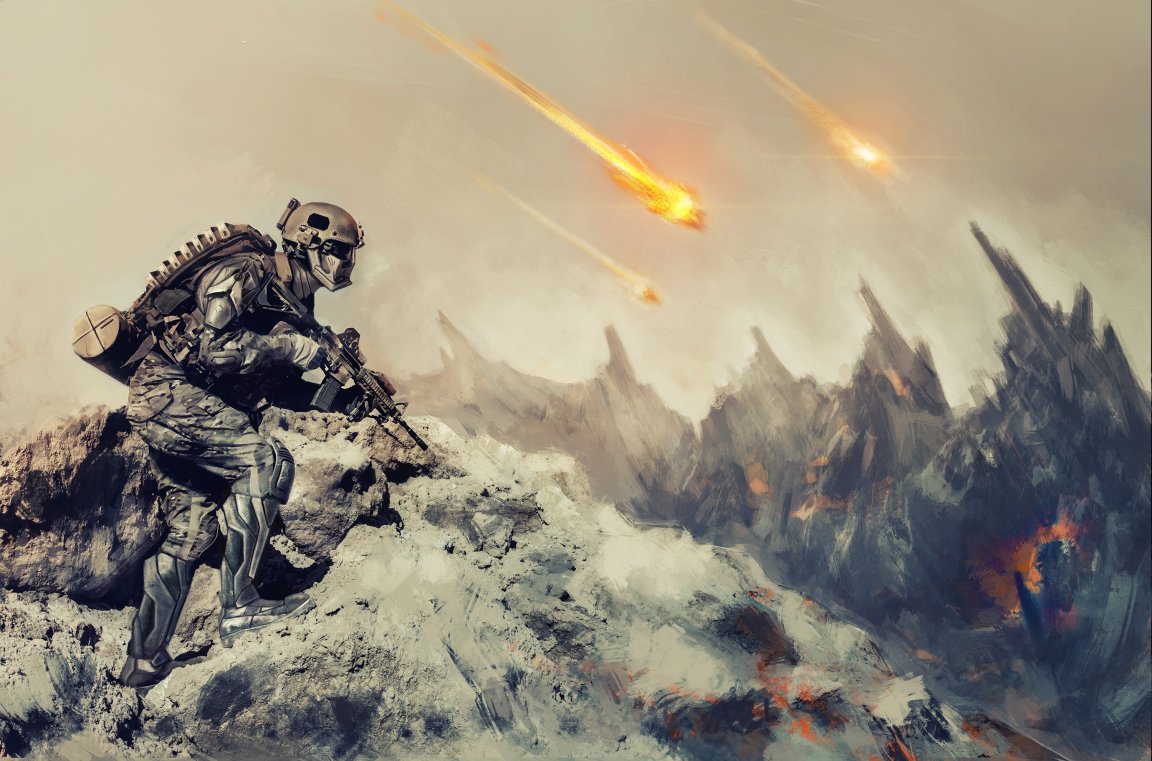
Science Fiction Futures
On October 21, 2015, people revisited “Back to the Future,” comparing the modern world with the world that Marty McFly saw when he time-traveled to 2015 in the second installment of the famous 1980s sci-fi series. While the movie incorrectly “predicted” several things, it got a bunch of technology right — like those shoes.
Or did the world just try to copy the movie?
The latter scenario is often the case with science fiction and real science. A lot of the technology we have today, whether intentionally or not, was predicted in one work of science fiction or another — be it a book, movie, or television show. And because sci-fi is often surprisingly accurate at predicting what’s to come, why not use it to prepare for, say, wars in the future?
This is what officers at the Marine Corps Warfighting Laboratory/Futures Directorate in Quantico, Va., had in mind when they launched a sci-fi contest last year. While pushing for creativity, the competition also encouraged the men and women of the Marine Corps to look at threats in a different way. The 18 finalists (out of 84 entries) went through a workshop co-hosted by the Atlantic Council where they were paired with professional sci-fi writers, including Max Brooks, the author behind “World War Z.”
Months of editing produced the top three stories, which were collected and published online in a sci-fi compilation called “Science Fiction Futures: Marine Corps Security Environment Forecast 2030-2045.” It’s quite an entertaining read, featuring scenarios that combine military technology currently being developed today — like the futuristic exoskeleton, electromagnetic pulse weapons, and combat-ready robots — with geopolitical chaos to predict possible problems in the future.
One story, “Water’s a Fightin’ Word,” is set in Africa during a global freshwater shortage crisis, while another, “Double Ten Day,” shows a civil war between pro-Chinese and pro-Taiwanese forces in the aftermath of a major earthquake. In the third story, “The Montgomery Crisis,” a genetically modified weapon wreaks havoc on the United States.

The Military of the Future
It’s very appropriate that the Marines get exposed to these situations, even it’s just via scenarios in a book (written by their peers and not Tom Clancy, mind you). It’s a very modern way of studying military tactics.
“We study history, but we’re starting to talk about studying science fiction more,” Brig. Gen. Julian Dale Alford, commander of the USMC Warfighting Lab/Futures Directorate, told WIRED. “It kind of dribbles down,” he adds. “We inject all kinds of future technologies using surrogates, we reorganize our forces and draw lessons learned. We do multiple experiments throughout the year.”
Thanks to science fiction, the military’s top brass, strategists, and regular uniformed personnel are no longer limited to their usual planning cycles. In combination with closer-in decadal predictions by U.S. intelligence agencies, these sci-fi scenarios are turned into real-life wargaming episodes. “Most folks in the intelligence community don’t think about the future. Most of the intelligence production is driven by known threats,” said Eric Simpson, a military consultant. “Known threat versus problems of discovery. Fiction is a really good place for thinking about problems of discovery.”
The U.S. military isn’t the first to use science fiction as a creative planning tool. Other institutions, like Lowe’s, Hershey, and Del Monte, have already employed sci-fi consultants. The medium has even being used in preparing for various climate scenarios. By pushing ourselves to think beyond what’s scientifically or technologically possible right now, we can be ready for whatever surprises may come in the future. Or perhaps we can even help shape that future so it aligns with our wildest predictions (like those “Back to the Future” sneakers).